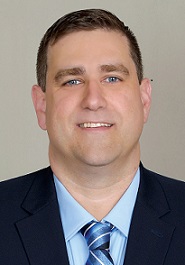23rd Annual Trauma Conference
Target Audience
The Trauma Conference is an interprofessional activity designed for physicians, physician assistants, nurse practitioners, nurses, EMS, and residents in the following specialties: trauma, emergency medicine, orthopedics, critical care, pulmonary, hospitalists, geriatric medicine, physical medicine, general practice, respiratory, internal medicine and rehabilitation. In addition, pharmacists, physical therapists, health professional students, social workers, and allied health professionals who care for trauma patients are welcome to attend.
Learning Objectives
Upon completion of this educational activity, participants should be able to:
Burn Care in 2022: A Multidisciplinary Effort
- Review the global and national burden of burn injury
- Discuss the different types, degrees, and depths of burn injury
- Describe the unique nature of electrical injury
- Determine the percent of total body surface area burned (TBSA)
- Review wound care for burns, including topicals and common dressings
- Explain the pathophysiology and management of inhalation injury
- Discuss the importance of holistic and multidisciplinary care of the burn patient, including nutrition, physical and occupational therapy
- Describe the roles of different health-care professionals in the burn unit
Trauma and Mental Health
- Recognize your role is unique, worthy and needed in delivering compassionate care to every patient that is safe, timely, efficient, effective and equitable
- Apply your current screening tool (Injured Trauma Survivor Screen) and other age-appropriate screening tools in a meaningful and effective way
- Discuss potential barriers to reporting stress reactions to trauma including stigma, lack of understanding, language, and culture for both the healthcare worker and the patient/patient’s family
- Describe the difference between post-traumatic stress disorder and acute stress disorder
- Incorporate methods of nonjudgmental management of patients and patient’s families who suffer from mental illness and are seeking help after trauma
ETCO2: An Early Warning System for Hemorrhagic Shock?
- Discuss how patient care can be improved through interprofessional problem-solving and collaboration
- Identify the mechanism through which decreased ETCO2 is representative of shock
- Describe the role ETCO2 may play in prediction of prehospital hemorrhagic shock
ICU Delirium in the Trauma Patient
- Improve trauma patient care and decrease delirium rates through interprofessional collaboration
- Discuss how healthcare professionals contribute to the ICU liberation bundle
Trauma Visual Cues
- Highlight visual cues that allow prompt recognition of high-risk traumatic injuries
- Identify physical exam or radiographic findings associated with injuries that may be worse than they appear
- Review opportunities for inter-professional collaboration in the diagnosis of traumatic injuries
Neurotrauma Update 2022
- Review the pathophysiology of traumatic brain injury (TBI) and spinal cord injury (SCI)
- Describe the evaluation and initial management of suspected TBI and SCI patients
- Discuss the current guidelines on management of TBI and SCI
- Recognize the importance of a multidisciplinary team in management of TBI and SCI patients
Preservation and Protection of Forensic Evidence
- Discuss the protection and preservation of forensic evidence
- Describe what healthcare professionals should do if they encounter materials, such as clothing, which may have evidentiary value needed for criminal investigations and prosecutions
Responding to Crisis: Lessons From Our Nation’s Heroes
- Discuss the critical components of crisis response and actions for mission success
- Determine how clear communications can affect the outcome in crisis response
- Adapt lessons learned from special operations into hospital emergency management
7:15 a.m. Technical Assistance
7:45 a.m. Welcome & Conference Overview
8 a.m. Burn Care in 2022: A Multidisciplinary Effort
Caesar A. Ricci, M.D., M.P.H.
8:45 a.m. Trauma and Mental Health
Mikayle “Miki” Durant, D.N.P., APRN, PMHNP-BC
9:30 a.m. Break
9:45 a.m. ETCO2: An Early Warning System for Hemorrhagic Shock?
Eric M. Campion, M.D., FACS
10:30 a.m. ICU Delirium in the Trauma Patient
Linda A. Dultz, M.D., M.P.H., FACS
11:15 a.m. Lunch Break
Noon Trauma Visual Cues
W. Gannon Sungar, D.O.
12:45 p.m. Neurotrauma Update 2022
Christopher D. Shank, M.D., M.B.A.
1:30 p.m. Break
1:45 p.m. Preservation and Protection of Forensic Evidence
Shane C. Drake, Sergeant
2:30 p.m. Responding to Crisis: Lessons From Our Nation’s Heroes
Alexander L. Eastman, M.D., M.P.H., FACS, FAEMS
3:15 p.m. Closing Remarks and Evaluation
3:30 p.m. Adjourn







Available Credit
- 6.25 AAPA Category 1 CME credit
Texas Health Resources has been authorized by the American Academy of PAs (AAPA) to award AAPA Category 1 CME credit for activities planned in accordance with AAPA CME Criteria.
This activity is designated for 6.25 AAPA Category 1 CME credit(s). PAs should only claim credit commensurate with the extent of their participation.- 0.75 Ethics Credit(s)
- 6.25 ACPE Credit(s)
In support of improving patient care, Texas Health Resources is jointly accredited by the Accreditation Council for Continuing Medical Education (ACCME), the Accreditation Council for Pharmacy Education (ACPE), and the American Nurses Credentialing Center (ANCC) to provide continuing education for the healthcare team.
Texas Health Resources designates this knowledge-based activity for 6.25 ACPE Credit(s). Joint Accreditation Universal Activity Number: UAN JA4008216-0000-22-006-L01-P- 0.75 Ethics Credit(s)
- 6.25 AMA PRA Category 1 Credit™
In support of improving patient care, Texas Health Resources is jointly accredited by the Accreditation Council for Continuing Medical Education (ACCME), the Accreditation Council for Pharmacy Education (ACPE), and the American Nurses Credentialing Center (ANCC) to provide continuing education for the healthcare team.
The Texas Health Resources designates this live activity for a maximum of 6.25 AMA PRA Category 1 Credit™. Physicians should claim only the credit commensurate with the extent of their participation in the activity.- 0.75 Ethics Credit(s)
- 6.25 Attendance
- 0.75 Ethics Credit(s)
- 6.25 EMS CreditTexas Health Resources is an approved CE provider for EMS Providers (DSHS Program Approval Number: 600827) through the Texas Department of State Health Services.
- 6.25 Nursing Contact Hour(s)In support of improving patient care, Texas Health Resources is jointly accredited by the Accreditation Council for Continuing Medical Education (ACCME), the Accreditation Council for Pharmacy Education (ACPE), and the American Nurses Credentialing Center (ANCC) to provide continuing education for the healthcare team.
- 0.75 Ethics Credit(s)

 Facebook
Facebook X
X LinkedIn
LinkedIn Forward
Forward